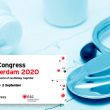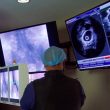A new clinical case to keep learning with colleagues! Today, we present a Thoracic Aortic Dissection in Patient with Complex Arch. This is the 4th case for SOLACI Peripheral, which continues its mission: to deepen knowledge exchange among Latin American interventional cardiologists. Tell us what you think about this case using the comments section in this...
ESC 2020 | Post PCI Trimetazidine: No Adverse Events or Great Benefits
Trimetazidine in addition to optimal medical therapy in patients undergoing coronary PCI does not change events rate at long term. The ATPCI study was presented at ESC 2020 and simultaneously published in the Lancet. This study randomized coronary PCI patients with stable or acute NSTEMI coronary syndromes to trimetazidine vs. placebo. What is the rationale...
Can Aspirin Use Be Interrupted After Angioplasty?
Aspirin discontinuation 1 to 3 months after angioplasty with continued P2Y12 inhibitor therapy reduces the bleeding risk without an increase in thrombotic events. This is also the case for patients admitted with acute coronary syndrome. Dual antiplatelet therapy with aspirin and a P2Y12 inhibitor has been shown to reduce the risk of major events compared with...
SOLACI PERIPHERAL | 3rd Clinical Case: Femoral PCI
In keeping with its Clinical Case Discussion Program, SOLACI’s peripheral interventions department, SOLACI Peripheral, presents the third clinical case, to promote knowledge exchange across the entire Latin American hemodynamics community. Share your thoughts on case and resolution in the comments and answer the questions at the end of the article. Femoral PCI Authors: MD Mauricio Cavalieri...
IVUS in Every Step of Complex Angioplasty
Complex angioplasties require not only experience and patience but also technology. Imaging–guided pre-dilation, stent sizing, and post-dilation reduced the cardiovascular events after a 3-year follow-up in patients who received drug-eluting stents in complex angioplasties. This paper, recently published in JACC Interventions, compared the 3-year outcome of the complex angioplasty optimization technique with intravascular imaging to...
Early Activation to Speed-Up Treatment of Infarcted Patients
Cath lab activation—and everything that entails—within 20 minutes was associated with the target of performing primary angioplasty in under 2 hours in at least 75% of patients. Historically, door-to-balloon time was measured, which provided a rough idea of where there could be flaws to fix. This is particularly true in the case of patients who need to...
Is Medical Treatment Better at Lowering Bleeding-Caused Mortality than Angioplasty?
Post-discharge bleeding in patients admitted for acute coronary syndrome (ACS) is linked to higher all-cause mortality. However, this is the case for both patients who underwent angioplasty and those who were managed with medical treatment. These are interesting data, given that medical treatment is frequently preferred due to lower bleeding risk. Speculation is based on...
How to Determine Optimal Balloon Size in Below-the-Knee Angioplasty
Unlike the coronary and femoral arteries, calcification of medial layers in infrapatellar arteries prevents positive remodeling and expansion capacity to maintain vessel lumen. Long term patency of endovascular treatment is suboptimal despite the coated balloons, atherectomy devices and stents. Standard angiographies only show vessel lumen far from its real dimension given the severe thickening of...
Ideal Area for Unprotected Left Main PCI
Courtesy of Dr. Carlos Fava. Unprotected left main PCI (PCI-UPLMS) is an acceptable and comparable strategy vs CABG, although the use of IVUS is advisable, since it has shown better evolution and mortality. However, the adequate stent expansion remains unclear. Researchers carried out a sub-analyzis of the NOBLE trial. Of the total 603 patients receiving...
Differences in Plaque Progression Depending on its Characteristics
The pattern of growth for each plaque differs according to the presence of certain risk factors. Atheroma volume at baseline was the most important predictor of plaque developing into obstructive lesions, as opposed to other characteristics historically considered as “dangerous.” The aim of this study was to analyze whether the pattern of non-obstructive lesion progression...









